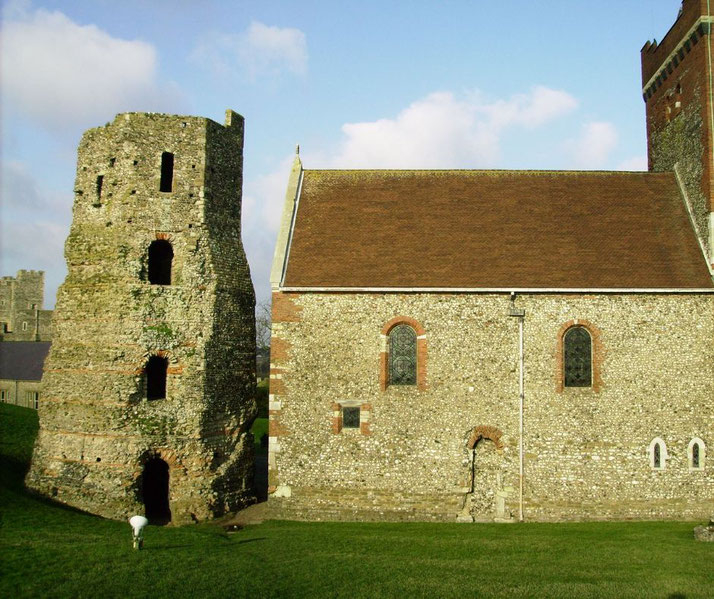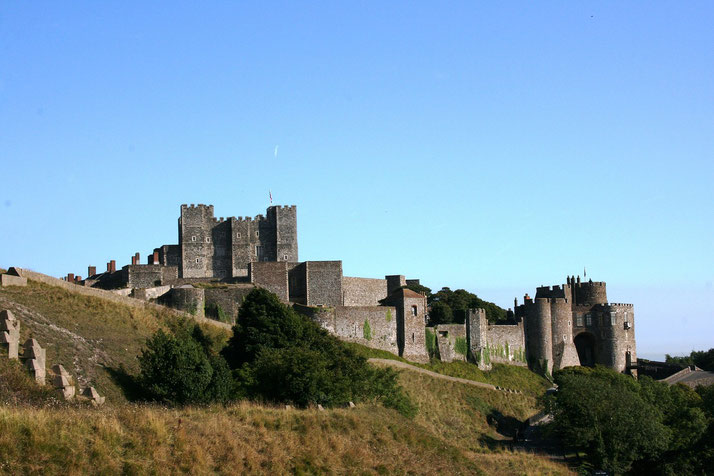The mighty Dover Castle: An impregnable fortress on the edge of England

Dover Castle, a medieval fortress situated on the southeastern coast of England, stands as an impressive symbol of the country's rich history.
The castle has played a significant role in British heritage, serving as a vital defensive stronghold throughout the centuries.
Here, will explore the construction and history of Dover Castle, from its origins as an Iron Age hill fort to its continued importance in modern times.
Iron Age and Roman Occupation
Dover Castle's story begins with an Iron Age hill fort that occupied the site long before the construction of the medieval castle.
Archaeological evidence suggests that the hill fort was established around 100 BC, and the strategic location was later recognized by the Romans during their invasion of Britain in AD 43.
The Romans constructed a lighthouse, known as the Pharos, on the hilltop, which still stands as the oldest surviving Roman building in Britain.

Anglo-Saxon and Norman Periods
Following the decline of Roman rule, the Anglo-Saxons established their presence in the area, and Dover became an important port for trade and defense.
However, it was not until the Norman Conquest in 1066 that the foundation of the medieval castle we recognize today was laid.
William the Conqueror recognized the strategic importance of Dover and ordered the construction of an earth and timber motte-and-bailey castle on the site.
The original timber castle was replaced with a stone structure during the reign of King Henry II in the 1180s.
The Great Keep, a massive square tower, was constructed at this time and remains the castle's most iconic feature.
The keep was built with thick walls, four corner turrets, and a strong central entrance, which combined to make it a formidable defensive structure.
Medieval Dover Castle
During the medieval period, Dover Castle continued to evolve as a military stronghold.
Under the reign of King John, a series of underground tunnels were constructed, which would later prove essential during times of conflict.
The castle's defenses were further strengthened under the reign of Henry III and Edward I, as they anticipated potential invasions from France.
This included the construction of a series of additional walls and towers, and a fortified entrance known as the Constable's Gate.

Role in the First Baron's War
The First Barons' War (1215-1217) was a civil war in England that erupted as a result of the strained relationship between King John and his barons.
The war saw Prince Louis of France, the future Louis VIII, invade England at the invitation of the rebellious barons, who hoped to replace King John with the French prince.
Dover Castle played a crucial role in the First Barons' War due to its strategic location and well-fortified defenses.
Situated on the southeastern coast of England, the castle was seen as the "key to England" and an essential stronghold to control in order to successfully invade the country.
Recognizing its importance, Prince Louis laid siege to Dover Castle in July 1216.
The castle was commanded by Hubert de Burgh, a loyal supporter of King John, who led a small garrison of approximately 140 men.
Despite being heavily outnumbered, the defenders of Dover Castle were able to hold out against the besieging forces, thanks to the castle's formidable defenses and strategic location atop the White Cliffs of Dover.
The siege continued for several months, during which time the attackers attempted to undermine the castle walls by digging tunnels, launching direct assaults, and utilizing siege engines like the trebuchet.
However, the defenders were able to counter these attacks by repairing the walls, launching counter-mining efforts, and repelling the assaults.
The castle's deep well also ensured that the garrison had a reliable supply of fresh water, a critical resource during a prolonged siege.
In October 1216, King John died, and his nine-year-old son, Henry III, ascended to the throne.
The tide of the war began to shift in favor of the English as more barons abandoned the French cause and rallied behind the new king.
In September 1217, Prince Louis lifted the siege of Dover Castle to focus on other objectives but ultimately failed to capture the English crown.
Dover Castle's successful defense during the First Barons' War was a testament to its strategic importance and the tenacity of its garrison.
Life after the Medieval Period
In the 17th century, Dover Castle underwent significant changes to adapt to new military technology.
As the use of artillery became more widespread, the castle's defenses were updated with bastions, gun emplacements, and strengthened walls.
This modernization continued through the 18th and 19th centuries, as the castle was adapted to serve as a barracks and military depot.
During World War II, Dover Castle's strategic importance reached new heights. The underground tunnels constructed in the medieval period were expanded and transformed into a military command center and underground hospital.
The tunnels became the nerve center for Operation Dynamo, the successful evacuation of more than 338,000 British and Allied troops from the beaches of Dunkirk in 1940.
The Castle Today
Dover Castle's impressive history spans millennia, reflecting the changes and challenges faced by the British Isles throughout the centuries.
Today, the castle stands as a testament to the fortitude and determination of the people who built, maintained, and defended it.
As a popular tourist attraction managed by English Heritage, Dover Castle continues to educate and inspire visitors with its rich history and architectural grandeur.

What do you need help with?
Download ready-to-use digital learning resources
Copyright © History Skills 2014-2025.
Contact via email
With the exception of links to external sites, some historical sources and extracts from specific publications, all content on this website is copyrighted by History Skills. This content may not be copied, republished or redistributed without written permission from the website creator. Please use the Contact page to obtain relevant permission.





